Biography of Robinho
The story of Robinho is one of extraordinary talent, meteoric rise, and ultimately, a shocking downfall. Born Robson de Souza on January 25, 1984, in the coastal city of São Vicente, Brazil, his journey represents the brilliant possibilities and tragic pitfalls that can accompany a life in the spotlight.
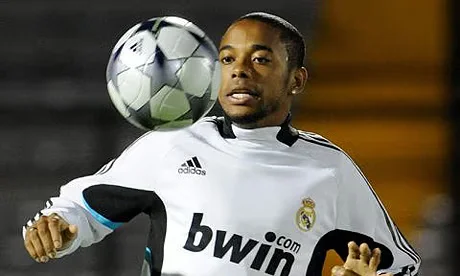
Childhood and Beginning of the Journey
Origin and Family
Robinho’s early life was marked by the challenging conditions common to many Brazilian football stars. Raised in the humble neighborhood of Parque Bitaru in São Vicente, he was born into a family with limited financial resources but abundant love for football. His father, Gilvan de Souza, worked various jobs to support the family, while his mother, Marina da Silva Souza, maintained the household.
The young Robson showed extraordinary football abilities from an early age, often playing barefoot on the streets and sandy beaches of his hometown. Local residents recall how the small boy would mesmerize onlookers with his ball control and natural flair—traits that would later define his professional career.
A pivotal moment in Robinho’s childhood occurred when he was just six years old. While playing in a local youth tournament, his performances caught the attention of Brazilian football legend Pelé, who was so impressed that he reportedly recommended the boy to Santos FC—the same club where Pelé himself had become a global icon decades earlier.
Path to Santos Academy
By the age of 12, Robinho had joined the youth academy at Santos FC, beginning a formal football education that would shape his distinctive playing style. The academy’s emphasis on technical skill development perfectly complemented Robinho’s natural abilities, allowing him to refine his dribbling, ball control, and creative vision.
During his formative years at Santos, Robinho earned the nickname “Pelezinho” (Little Pelé) from coaches and fellow players—a testament to both his extraordinary potential and the weight of expectations he would carry throughout his career. His progress through the youth ranks was meteoric, with coaches frequently advancing him to play with older age groups to provide sufficient challenge.
The young player’s family made significant sacrifices to support his development, with his father often working extra hours to afford bus fare for Robinho’s training sessions. This early period also saw the development of Robinho’s signature moves, including the “pedalada” (step-over) that would later become one of his trademarks on the world stage.
Professional Debut
Breakthrough in Santos First Team
Robinho’s professional debut for Santos came in 2002 at age 18, a moment that marked the arrival of one of Brazil’s most promising talents on the professional stage. Under the guidance of coach Emerson Leão, Robinho quickly established himself as a key player in a talented Santos team that also featured future stars like Diego and Elano.
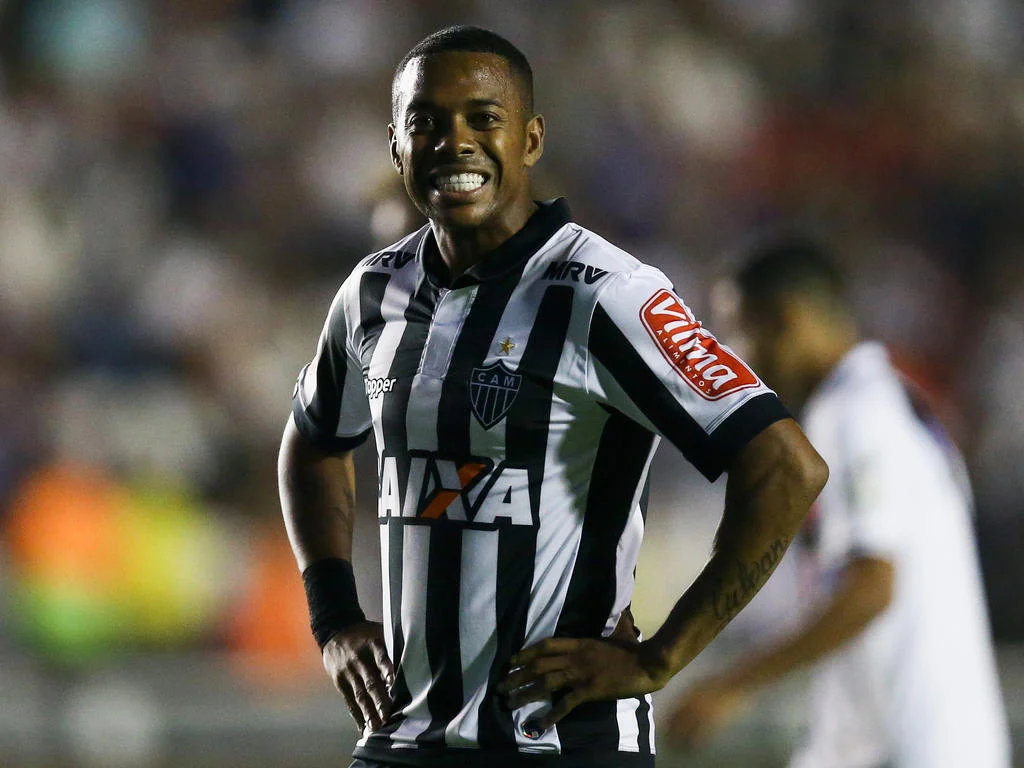
His first season culminated in Santos winning the Brazilian Championship (Campeonato Brasileiro), with Robinho contributing crucial goals and assists despite his youth. His performances during this campaign—characterized by audacious dribbling, creative passing, and moments of individual brilliance—captured the imagination of Brazilian football fans and drew comparisons to Santos’s greatest legend, Pelé.
The 2002-2004 period represented Robinho’s emergence as one of South America’s most electrifying talents. He helped Santos secure another Brazilian Championship in 2004, while his performances in the Copa Libertadores further enhanced his reputation across the continent. During this formative professional period, he scored 47 goals in 108 appearances for Santos—impressive numbers for a young player operating primarily as a winger or second striker.
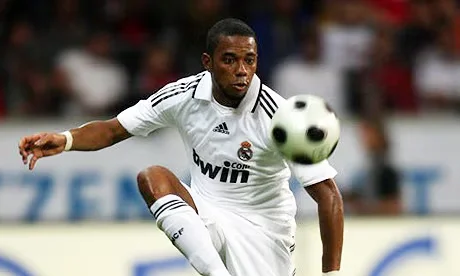
Move to Europe: Real Madrid
By 2005, Robinho had outgrown Brazilian club football, and Europe’s elite clubs were competing for his signature. After prolonged negotiations, Real Madrid secured his services for €24 million (approximately $30 million at the time), making him one of the most expensive South American transfers of that era.
His arrival at the Santiago Bernabéu Stadium placed him in the company of “Galácticos” like Zinedine Zidane, Ronaldo, David Beckham, and Roberto Carlos. At just 21 years old, Robinho was thrust into one of football’s most pressurized environments, tasked with helping restore Real Madrid to European dominance.
Robinho’s Real Madrid debut came against Cádiz CF in August 2005, where he immediately showcased the flair and technical ability that had defined his early career in Brazil. Though his adaptation to European football involved some challenges, his natural talent was evident, and he gradually established himself as an important player in the Madrid setup.
European Career
English Period at Manchester City
After three seasons at Real Madrid that yielded two La Liga titles but perhaps not the consistent brilliance many had expected, Robinho made a shocking transfer to Manchester City on September 1, 2008. The £32.5 million (approximately $60 million) deal represented a watershed moment in football economics, coming on the same day that the club was acquired by the Abu Dhabi United Group.
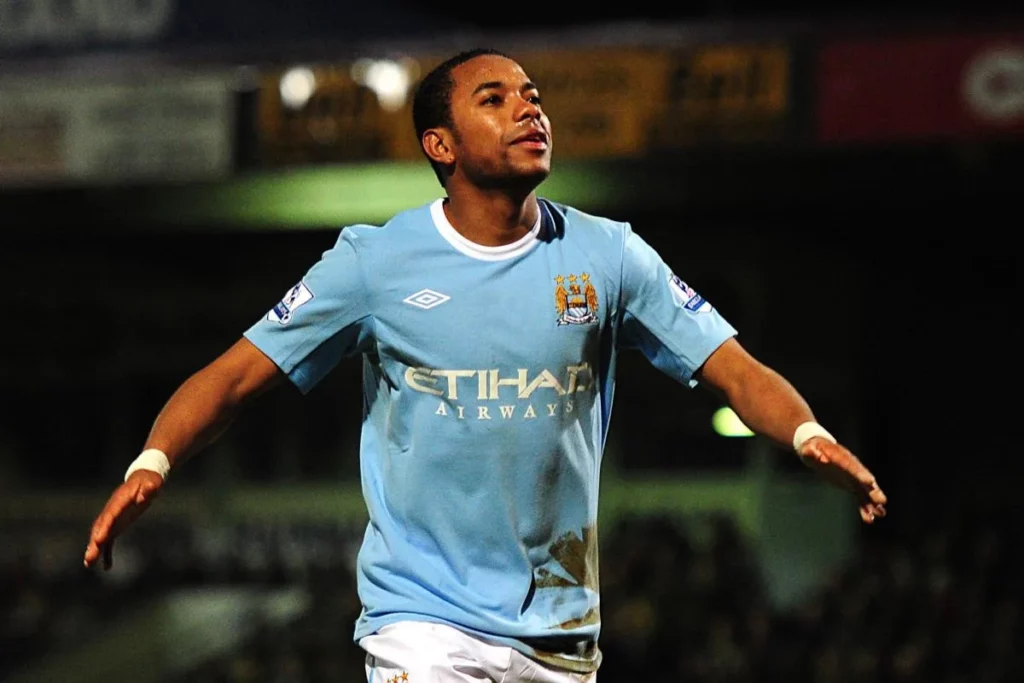
Robinho’s signing symbolized Manchester City’s ambitions to disrupt the established elite of English football. As the club’s new record signing and most high-profile player, he shouldered enormous expectations. His Premier League debut couldn’t have been more symbolic—scoring against Chelsea, a club that had reportedly also sought his signature.
His first season at City saw flashes of brilliance, with Robinho finishing as the team’s top scorer with 14 Premier League goals. However, his second season proved more challenging, with injuries, inconsistency, and adaptation issues limiting his impact. By January 2010, less than 18 months after his headline-grabbing arrival, Robinho returned to Santos on loan, signaling the effective end of his Manchester City experiment.
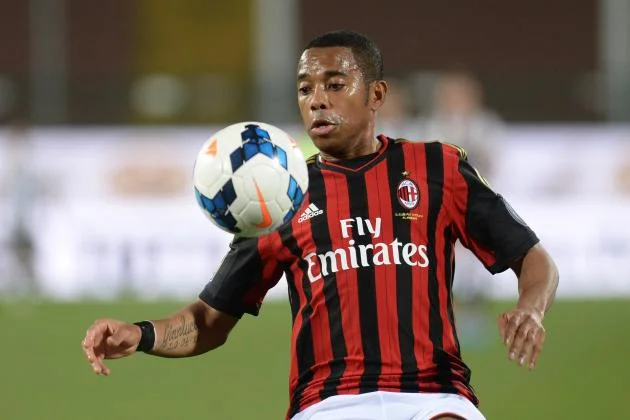
Italian Phase: AC Milan
Following his brief return to Santos, Robinho transferred to AC Milan in August 2010 for €18 million (approximately $24 million), joining a team that featured stars like Zlatan Ibrahimović, Alexandre Pato, and his Brazilian compatriot Ronaldinho. This move represented another opportunity for Robinho to fulfill his potential at an elite European club.
His time at Milan began promisingly, with Robinho contributing to the team’s Serie A title in the 2010-11 season—the club’s first league championship since 2004. Playing alongside Ibrahimović and Pato in a formidable attacking trio, Robinho seemed to have found an environment where his creative talents could flourish.
During his four seasons at Milan (2010-2014), Robinho made 144 appearances and scored 32 goals across all competitions. While these statistics were respectable, many observers felt that they still fell short of the extraordinary potential he had shown as a young player. Nevertheless, his Milan period represented one of the more stable phases of his European career.
Return to Brazil and China
By 2014, with his influence at Milan waning, Robinho returned to Santos for a third stint with his boyhood club. This homecoming was followed by a period of frequent transfers that saw him play for clubs in Brazil and beyond, including Atlético Mineiro and Chinese side Guangzhou Evergrande.
His time at Guangzhou Evergrande reunited him with former Brazil manager Luiz Felipe Scolari, but Robinho struggled to make a significant impact in Chinese football. After just six months in China, he returned to Brazil with Atlético Mineiro, where he experienced something of a career renaissance, helping the club win the 2016 Campeonato Mineiro (Minas Gerais State Championship).
This latter phase of Robinho’s club career reflected a player searching for stability and attempting to recapture former glories. While he continued to display flashes of the technical brilliance that had defined his early years, consistency proved elusive, and his star power had diminished considerably from his peak years.
Brazil National Team
First Call-up and Debut
Robinho’s international career with Brazil began in July 2003 when, at just 19 years old, he made his debut against Nigeria. This call-up came after his breakthrough performances for Santos had established him as one of the country’s most exciting young talents.
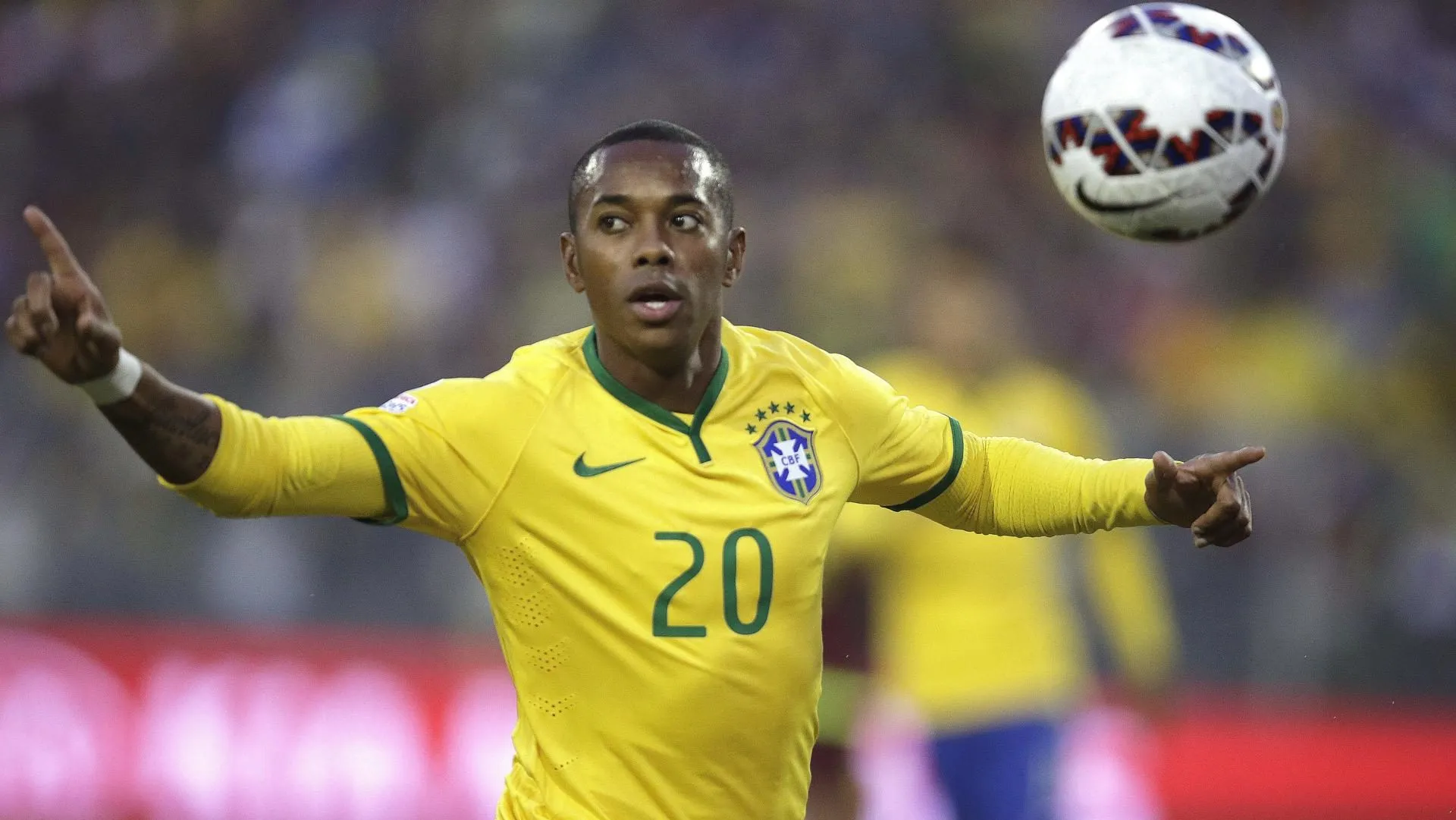
Wearing the iconic yellow jersey that had been graced by legends like Pelé, Garrincha, and Ronaldo, Robinho embraced the pressure and expectations that come with representing Brazil. His early international appearances showcased the flair and creativity that had made him a star at club level, with his dribbling ability and close control particularly impressing in the international arena.
Over the course of his international career, Robinho would accumulate 100 caps for Brazil, scoring 28 goals—statistics that place him among the more significant players in the nation’s recent football history. He represented his country at two World Cups (2006 and 2010) and multiple Copa América tournaments.
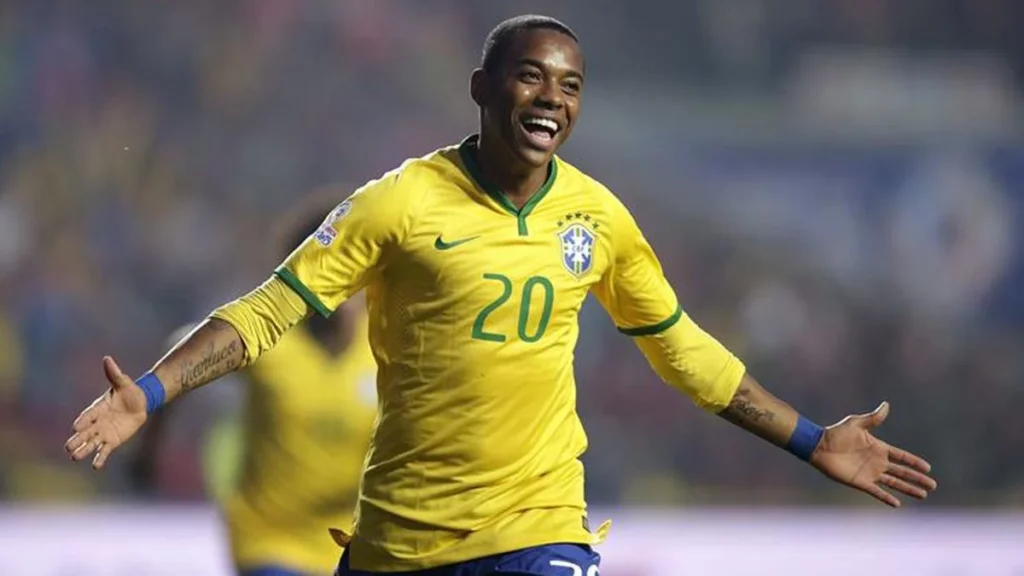
Best Matches for the National Team
While Robinho’s international career coincided with a period when Brazil fell short of World Cup glory, he delivered several standout performances that highlighted his considerable talents. Perhaps his finest tournament in the yellow jersey came at the 2007 Copa América in Venezuela.
During this competition, Robinho emerged as Brazil’s key attacking threat, scoring six goals to finish as the tournament’s top scorer. His performances—particularly in the 6-1 semifinal victory over Uruguay and the 3-0 win against Argentina in the final—showcased Robinho at his brilliant best: combining technical skill with decisive end product to devastating effect.
Other memorable moments in Robinho’s international career included his performances at the 2009 Confederations Cup, which Brazil won by defeating the United States in the final. His partnership with Kaká and Luis Fabiano during this period represented one of Brazil’s more effective attacking combinations of the era.
Despite these successes, Robinho’s World Cup experiences brought disappointment. At the 2006 tournament in Germany, Brazil was eliminated by France in the quarterfinals, while the 2010 edition in South Africa saw the team exit at the same stage against the Netherlands. In both tournaments, Robinho showed glimpses of his ability but could not prevent his team’s earlier-than-expected departures.
End of Career
Last Clubs and Downturn in Form
Robinho’s final career saw brief stints at Turkish clubs Sivasspor and İstanbul Başakşehir (2018-2020), reflecting his decline and legal troubles. In 2020, Santos announced his return but suspended the contract days later following backlash related to his 2017 sexual assault conviction, ending his professional career. By then, Robinho’s skills had diminished and he struggled at mid-tier clubs. In March 2023, Brazilian authorities arrested him to begin his nine-year sentence after Brazil’s court enforced the Italian conviction. His story represents a dramatic rise-and-fall in football—from São Vicente’s streets to European stardom to imprisonment. Robinho remains a complex figure whose talents are inseparable from the crimes that defined his later life, showing that fame provides no shield from consequences.